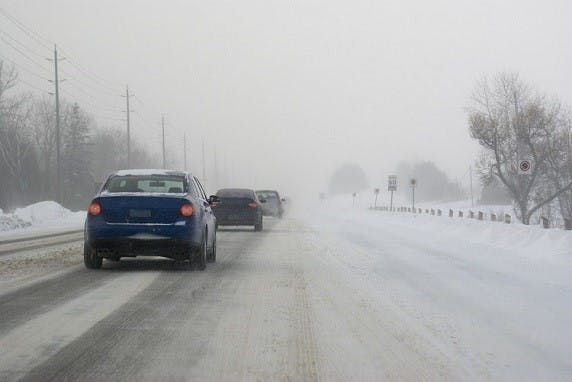Newsroom
ICBC: Northern B.C. drivers facing challenging road conditions
February 13, 2019

Colder temperatures across the region have led to compact, icy snow on the roads.
Crashes are at an all-time high in B.C. and during the winter months, crashes reach their highest point of the year. In the North Central region, 51 casualty crashes occur in February due to driving too fast for the conditions or road/weather conditions.*
That's why ICBC is urging drivers to do their part to prevent crashes by adjusting their driving and properly equipping their vehicle for the road conditions.
Winter weather in northern B.C. presents its own set of challenging road conditions for drivers – namely, black ice, heavy snowfall and freezing rain. Road conditions in northern B.C. are changing every day.
In bad weather, slow down, increase your following distance and allow extra travel time.
Top Drive Smart tips:
Focus your full attention on the road and use extra caution when approaching intersections and corners – they may be icy.
Consider using your headlights and taillights whenever weather is poor and visibility is reduced – not only at night – to help you see ahead and be seen by other drivers. Keep in mind that daytime running lights usually don't activate your taillights.
Ice and snow can hit unexpectedly so make sure your tires are rated for the conditions you'll be driving in. Check your tire pressure regularly – pressure drops in cold weather and overinflated tires can reduce gripping.
Clear off any snow that's built up on your vehicle before driving including headlights, wheel wells and external sensors if you have a collision warning system.
When severe winter weather hits, consider alternatives – carpool with a confident driver whose vehicle is equipped for the conditions, take a taxi, work from home or at least wait until the road crews have cleared major roads. Sometimes the best option is to leave the car at home.
In poor weather, use extreme caution around snow plows. Maintain a safe following distance and don't pass them – it's not safe. These vehicles may be equipped with a wing blade on either of its sides which may not be visible due to the snow it sprays.
For detailed tips on how to drive in winter weather, visit icbc.com or ShiftIntoWinter.ca.
*Casualty crashes are crashes where at least one person was injured or killed. Based on police data (five year average from 2013 to 2017).
Media contact:
Lindsay Wilkins
604-982-4759
Media contact:
Lindsay Wilkins
604-982-4759
